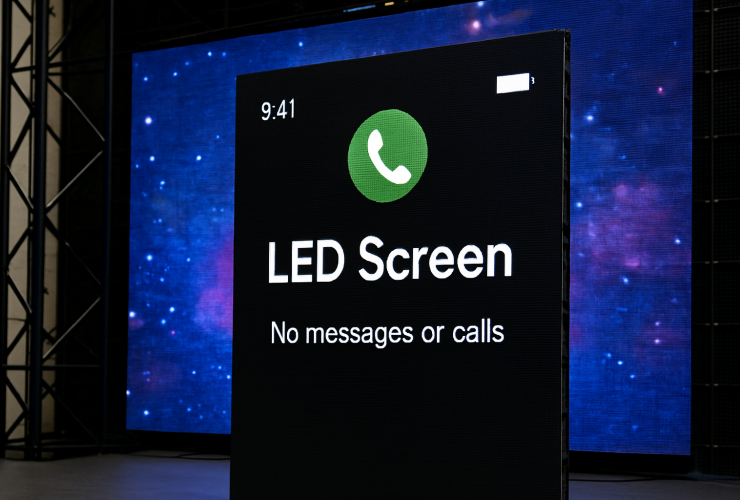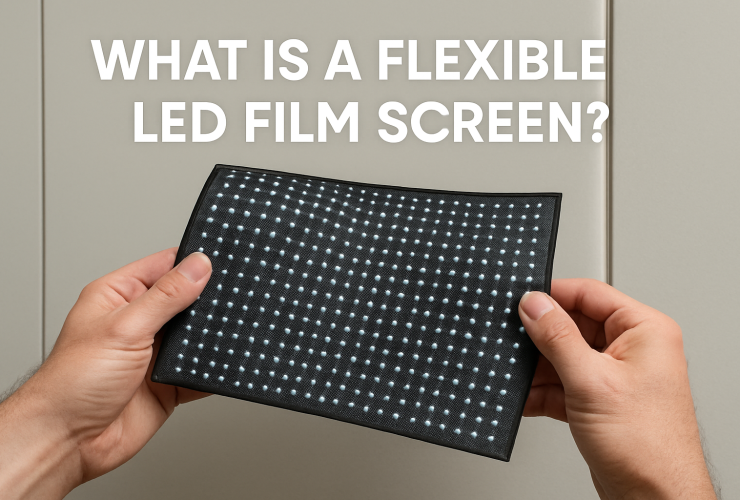Film and television production encounters XR technology, see how LED display creates creative sparks
After the great success of Disney’s “The Mandalorian” produced by ILM, the use of LED virtual studios for film and commercial production has become more and more popular.
From the hit TV series “Flowers” at the beginning of this year, to the Oscar-winning “Poor Things”, to the upcoming first domestic XR virtual panoramic film “Train to the Border”, XR virtual shooting technology has gradually become a hot topic in the film and television industry.
According to Research and Markets, the global virtual production market will reach US$5.1 billion by 2027. As the background of film and television shooting, LED screens have attracted more attention from film and television producers.
In 2024, more and more LED screens and related companies will begin to get involved in the field of XR virtual production, or launch new large-screen products with excellent color performance and clarity, or create an overall solution integrating LED display systems, real-time rendering systems, tracking systems and control systems, to achieve the integration of the real world and digital virtuality, and bring a new experience of both vision and somatosensory.
High-quality viewing experience and low cost go hand in hand
New trends in future film and television
Taking the film “Flowers” as an example, a large number of gorgeous shots in the “Yellow River Road” scene are realized through XR (mixed reality) and LED background walls, which can restore the virtual shooting scene required by the director in the shortest time, which can reduce the construction cost and create the “most vintage” Shanghai through images.
Industry insiders have pointed out that this represents a new trend in future film and television shooting. XR virtual shooting may replace real scenes and bring subversive changes to the production industry.
- On-site visualization
Traditional virtual production often leads to unnatural interactions between people and AR elements, especially in the virtual links of live broadcast and recording. Since the audience cannot directly see the virtual scene, they will have the subjective impression of stiff movements and awkward plots. This is the main problem that the panoramic 360° XR technology needs to solve by presenting dynamic virtual elements and scenes in real time through LED screens.
- Improve post-production efficiency
Due to the imaging characteristics of its LED screen, XR shooting can synthesize characters and environmental spaces in real time with natural and real light sources, so that the post-production visual effects production process of traditional film and television can be advanced, greatly shortening the post-production cycle and greatly reducing the shooting time and cost.
- Save the cost of setting
Using XR virtual studios or XR studios for shooting can greatly reduce the number of outdoor scenes required during the shooting process, thereby saving the high cost of outdoor scenes, and effectively avoiding the artificial destruction of the natural environment during the traditional shooting process.
- Not restricted by time and space
To a certain extent, film and television are also the art of time and space. Good film and television works require a lot of beautiful and meaningful pictures, and these scenes were difficult to capture in the past. Now, the film and television production team can design and replace the required scenes at any time with the help of LED display screens in XR studios, saving time and labor costs while achieving better results.
- Unlimited imagination space
XR photography provides unlimited imagination space for film production. Directors can build any desired virtual scenes according to their creative intentions without being restricted by the actual shooting environment. This creative freedom will greatly enhance the diversity and innovation of film works.
- High immersion
XR technology brings actors into a completely virtual environment, allowing actors to truly perceive every detail in the virtual space, so that they can perform more naturally, which not only improves the quality of actors’ performances, but also greatly enhances the audience’s viewing experience.

According to a previous research report by Xiong Jun of Guolian Securities, the global market size of XR virtual shooting display screens will reach 560 million, 760 million, and 980 million US dollars in 2023-25, respectively, an increase of 40%, 35%, and 30%, respectively, and will become one of the fastest growing tracks in the small-pitch industry.
Behind this rapid development, the continuous upgrading of hardware equipment and the continuous optimization of software technology are inseparable.
In terms of hardware equipment, the application of technologies such as COB, MIP, and virtual pixels has accelerated the prosperity of the Mini and Micro LED markets. The resolution, contrast, refresh rate, and comfort of products have been continuously improved, and the user experience has become more natural and smooth, laying a solid foundation for the widespread application of XR technology.
In terms of software technology, technologies such as 3D modeling, real-time rendering, and human-computer interaction are becoming increasingly mature, providing strong support for XR applications; with the support of AI technology, content production can be made more efficient, smarter, and more creative, thereby saving creators’ time and energy, and helping to promote the scale development of the industry.
Diverse application scenarios
National policies strongly support
The prosperity of technology is rooted in market demand.
The reason why XR virtual shooting is so popular in the market is that it fits people’s high-quality pursuit of technology and entertainment in the digital age. Not only film and television shooting, the current XR virtual shooting technology has gradually penetrated into various industries in the audio-visual field, including drama performances, concerts, reality shows, product launches, music shows, short videos, variety shows, advertising, live broadcasts, etc.
From the application point of view, it is mainly divided into two major fields: VP and XR.
- VP (Virtual Production): It is built in a ring with LED display screen (sky curtain + curved screen). The shooting range of the camera is limited to the screen. There is no need to expand reality. It is mainly used in film and television production applications, which has a great positive impact on promoting the domestic film and television industrialization process.
- XR (Extended Reality): A virtual shooting technology that expands the real scene, mainly using a three-fold screen (left and right screens + floor screen/sky screen). It requires extending reality to create a virtual space, and is mainly used in applications such as virtual shooting of advertising TV, XR virtual press conferences, XR virtual stages, and XR virtual studios. It provides new virtual reality technology services for commercial customers outside the film and television industry.
More and more scenes are integrated into XR technology, creating a broader application prospect.
Behind this, it is also inseparable from the improvement and support of national policies and relevant regulations.
In 2021, the “14th Five-Year Plan” clearly proposed to include virtual reality and augmented reality in the key industries of China’s digital economy.
In 2022, the Ministry of Industry and Information Technology and other five departments jointly issued the “Virtual Reality and Industry Application Integration Development Action Plan (2022-2026)”, which clearly proposed that by 2026, the overall scale of China’s virtual reality industry will exceed 350 billion yuan, and breakthroughs will be achieved in key areas such as industry, culture and tourism, media, and education, creating pioneer cases.
In 2023, the State Administration of Radio, Film and Television issued the “Notice on the Demonstration of Application of Radio, Television and Network Audiovisual Virtual Reality Production Technology”, encouraging qualified enterprises and institutions to carry out new display technology applications that meet the characteristics of virtual reality, and improve the quality of content presentation in various forms.
In February 2024, the world’s first VP LED display standard “LED Display System Specification for Virtual Production (VP)” drafted by Unilumin, ROE, Nova Nebula and other companies was officially released to the public, effectively filling the domestic standard gap and providing a reliable basis for the acceptance of domestic and foreign VP LED display projects of Chinese companies.
…..
It can be said that the current development trend of the virtual production industry is improving and the prospects are promising!
Compared with traditional shooting methods, the advantage of XR virtual shooting is that it is no longer affected by factors such as geographical location, weather, and environment. The real objects and scenes can be highly integrated to achieve what you see is what you get. At the same time, compared with the construction of real scenes, the time, manpower and resource costs of virtual shooting are also lower.
LED large screen + XR virtual shooting has become the general trend in film and television production and related audio-visual fields! Many LED display and related companies have keenly observed market trends, increased investment, and competed to layout in this emerging track, which has promoted the successful implementation of a series of high-end projects in the domestic and even global markets, and also made the new “cake” of the LED virtual shooting market segment in the LED display industry chain bigger and bigger.
What new products, technologies or disruptive cases will the XR virtual production market usher in in the second half of 2024? How does the industry view the subsequent development of this technology?
All of this is worth our full expectations!



